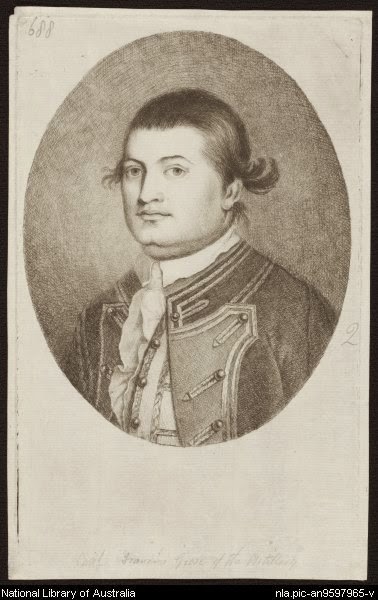The most accurate convict record is the indent from the ship. The indents from the Pitt only contain the basic details of trial, location and sentence, but are an invaluable record that can be used to correct errors that appear in later documents.
The stories of the convicts, the soldiers, and those who arrived free in 1792 aboard the transport ships the Pitt & the Kitty, has just been published and is now available to purchase
Sydney Cove 1792

Tuesday 17 February 2015
Saturday 14 February 2015
Arrival of the Pitt 1792
Today marks 223 years since the transport ship Pitt arrived in Sydney Cove under Captain Manning. Despite the poor state of the settlement and the shortage of food required to cope with the arrival of almost 400 convicts, as well as many soldiers and their families, Major Francis Grose was impressed with the colony. Living at Sydney without daily contact with the convicts working at Parramatta, he obviously had a very limited knowledge of the real state of living conditions for so many.
I am at last, Thank God, safely landed with my family at this place, and to my great astonishment, instead of the rock I expected to see, I find myself surrounded with gardens that flourish and produce fruit of every description. Vegetables are here in abundance and I live in as good a house as I wish for...
(Historical Records, vol. 1, part 2, p.613)
Tuesday 10 February 2015
The Voyages 1791-1792
In 1792, four years after the first settlement
at Port Jackson, three convict ships arrived in NSW from England, the Pitt, the Royal Admiral and the Kitty.
Unlike earlier years, they did not arrive together as a fleet, but separately.
This book documents the voyages from the official letters sent
and includes a contemporary account from Dr. Edward Laing, Assistant Surgeon of
the Pitt, giving a detailed
description of conditions on board, the diseases incurred and treatments
proscribed. Life on the streets of London in 1790 is recorded for many of the
convict women from their trials at the Old Bailey, and later chapters describe
what became of some of them in the colony. Some remained at Sydney Cove, others
moved to the settlements at Norfolk Island, Parramatta, the Hawkesbury and
Tasmania.
A calendar of events in NSW in 1792 has been compiled from the
reports of Atkins and Collins, detailing the struggle of coping with meagre rations and the harsh
climate. Biographies are included for all the known convicts and soldiers and a
list records those who arrived as free passengers.
Subscribe to:
Posts (Atom)

